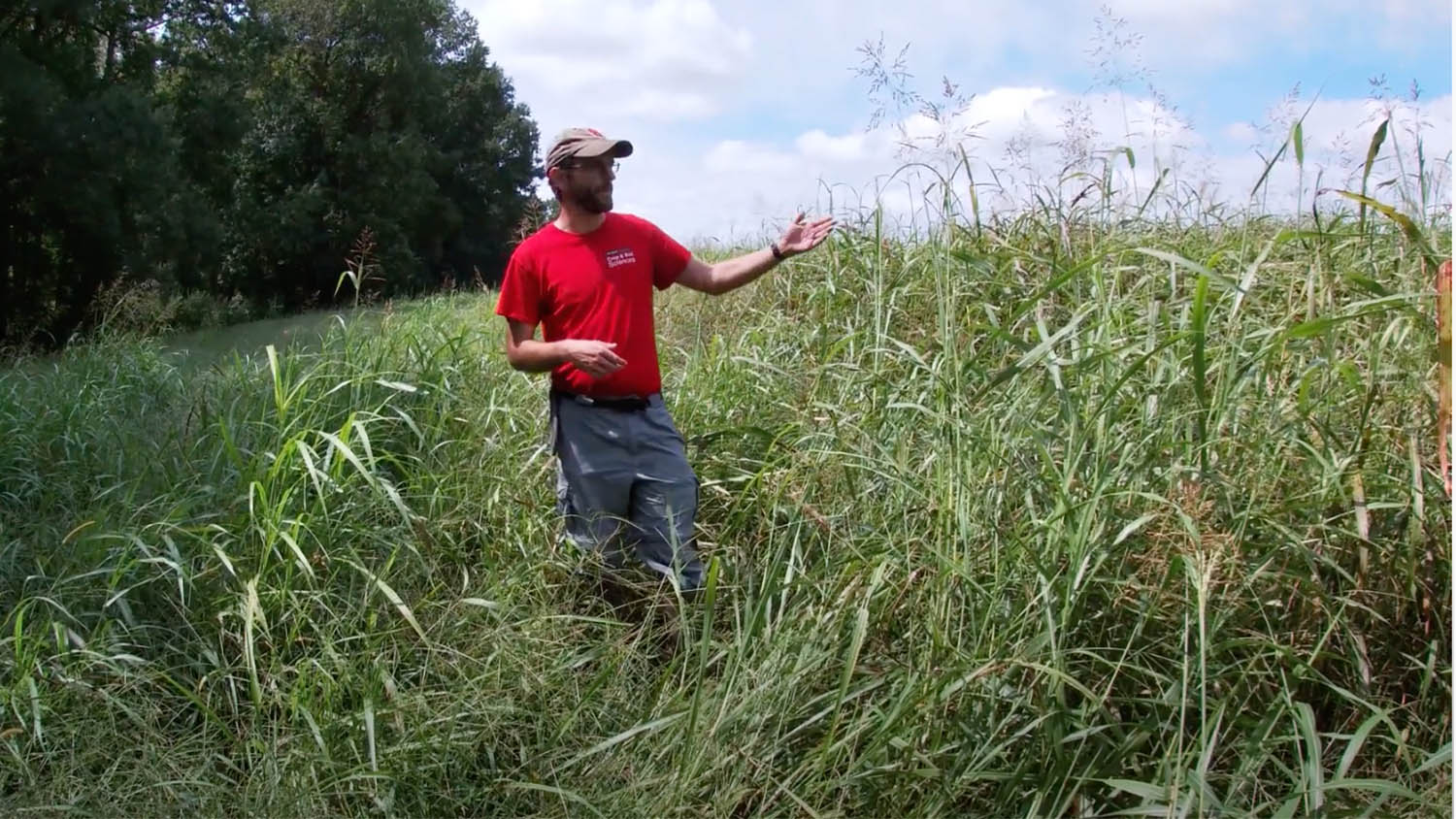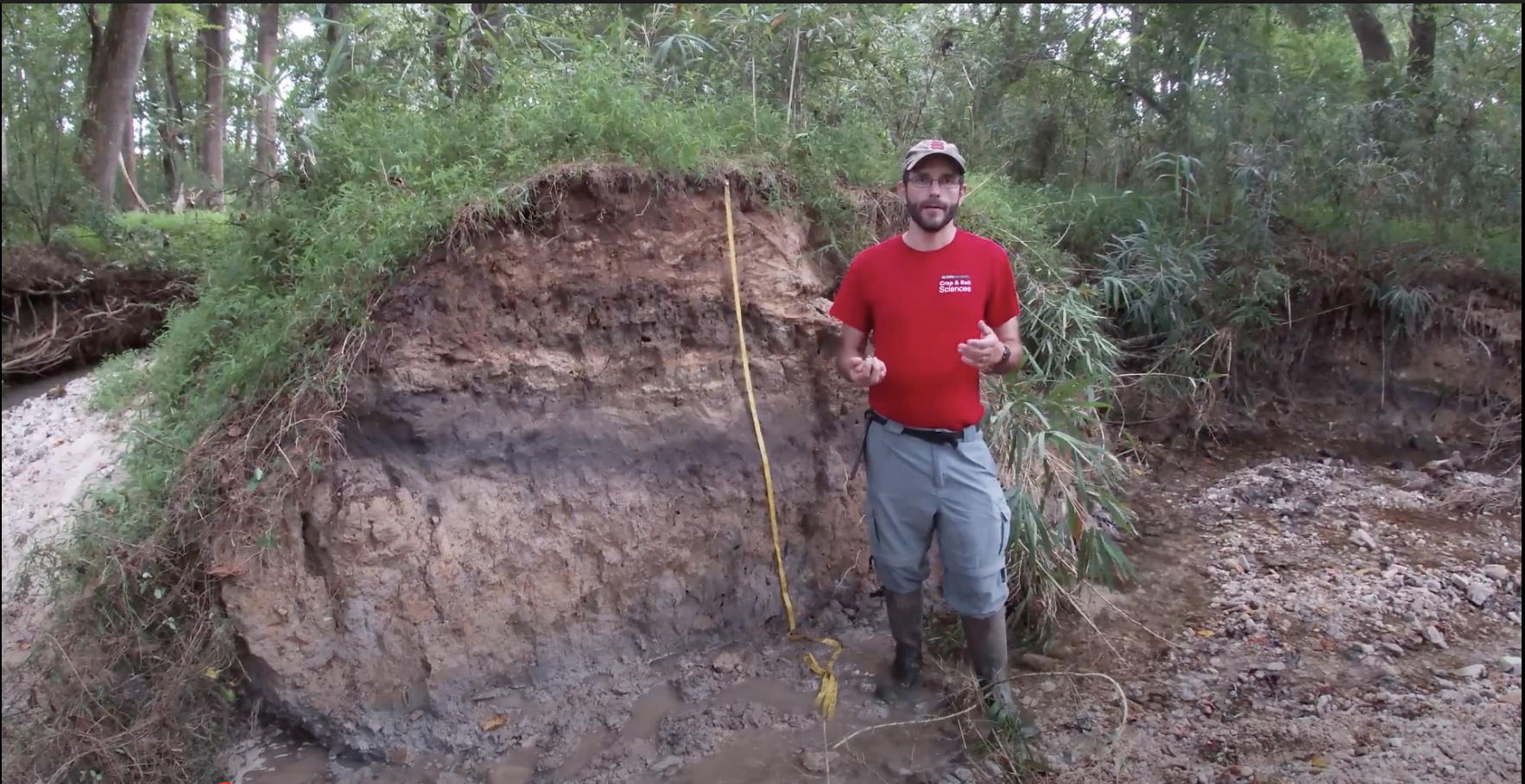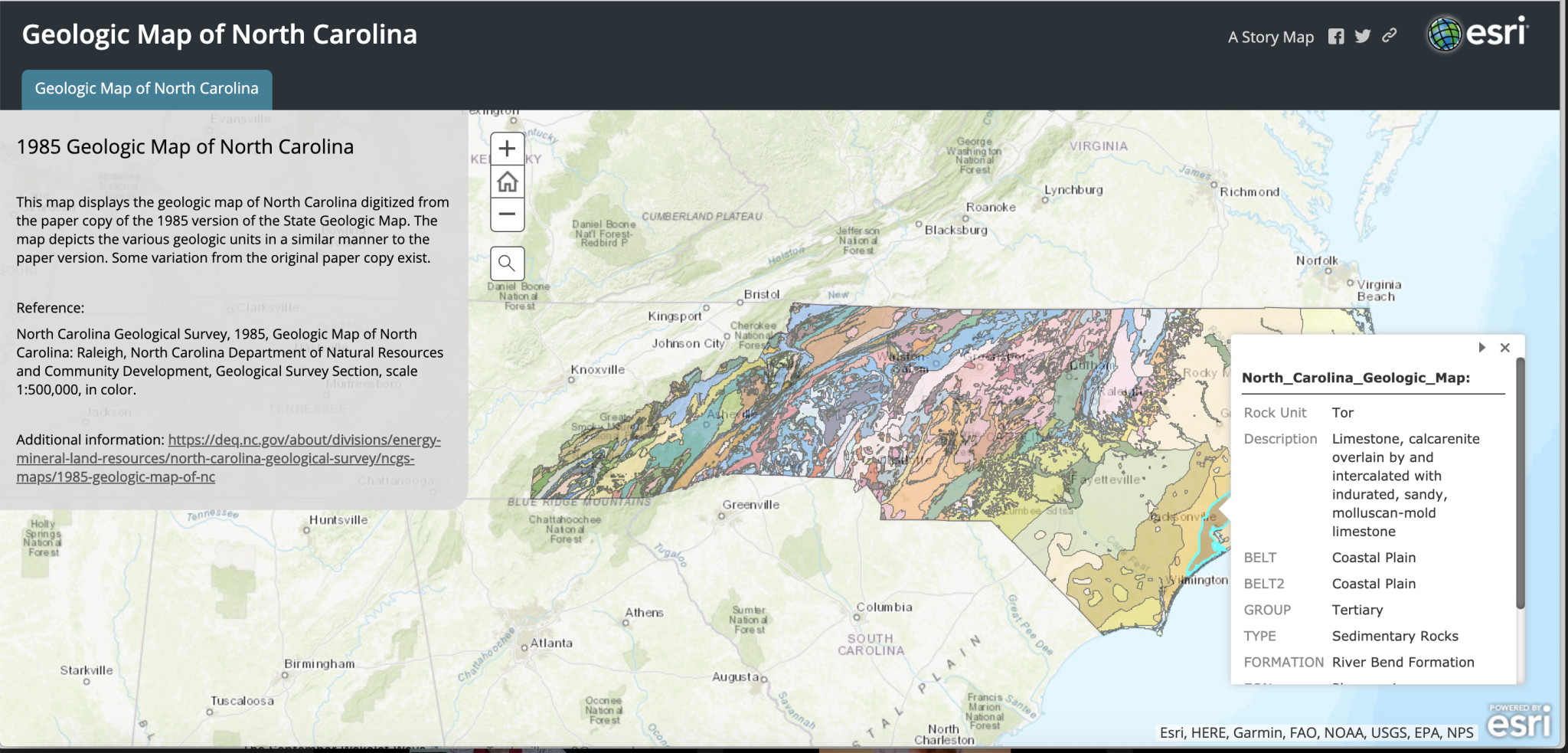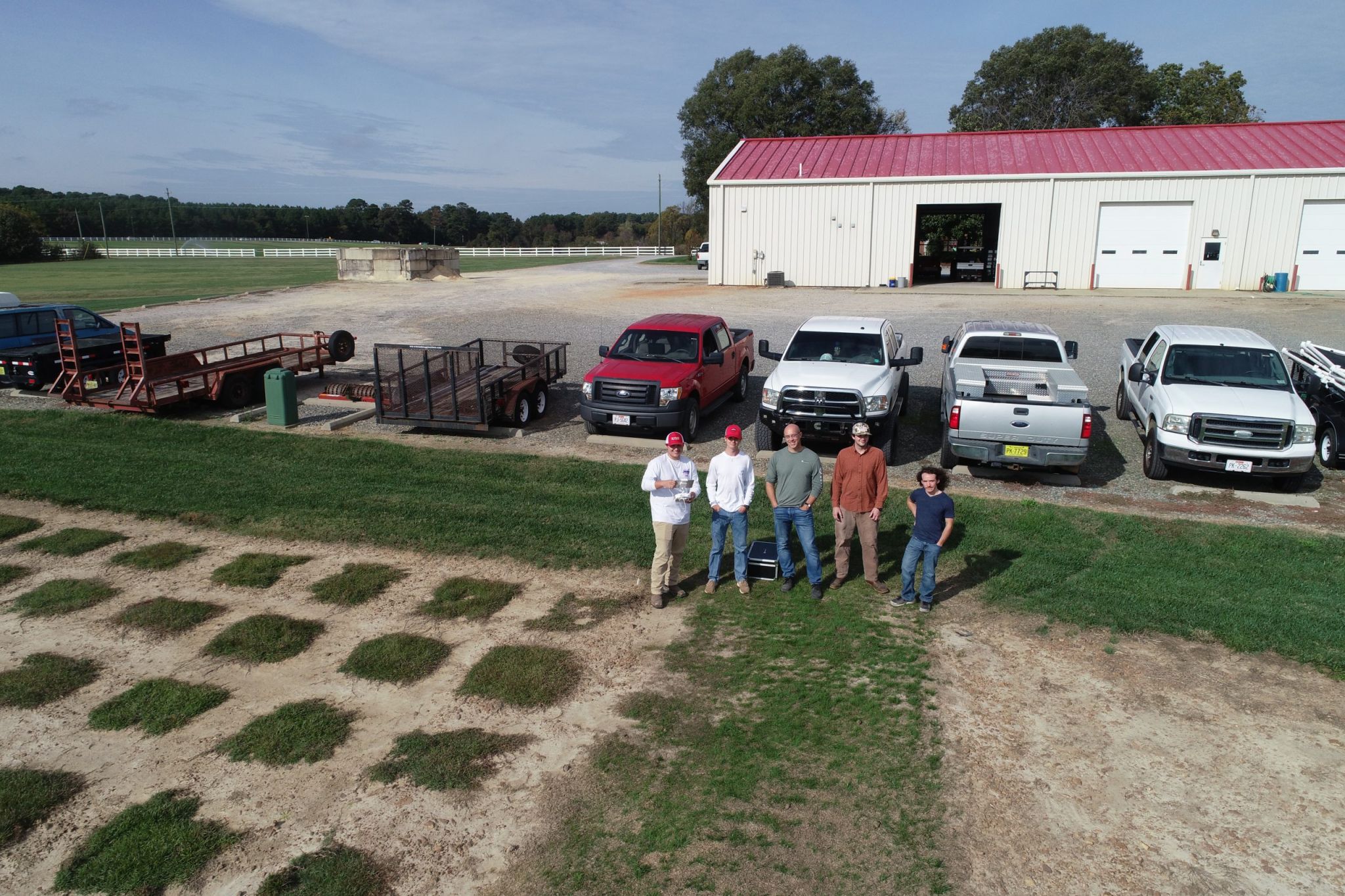Making Virtual Class Work

NC State’s mid-stream pivot to online classes for undergraduates this fall raised concerns among students and parents on how lab-oriented classes would unfold. Hands-on learning is a hallmark of Crop and Soil Sciences. But thanks to wise planning and a hefty dose of creativity, Crop and Soil Sciences instructors are taking remote-learning students outside the classroom and even a bit further this year.
In Touch at Home
Professor Matthew Ricker teaches our Soil Judging course. It’s a class that necessitates tactile experience. “My job is to make sure our students are confident in field skills like soil classification. You can’t teach this effectively without feeling the soil,” Ricker said. Students take this class for the employer-valued field skills they develop in preparation for soil judging competitions. “I get a few calls every year from hiring managers who are specifically looking for students with field experience like this,” Ricker said.
Ricker normally teaches hands-on labs throughout the semester. But that wasn’t possible this year. “When I saw the switch to online classes coming, I held a six-hour intensive day at the Lake Wheeler field lab. Students collected photos and all of the soil samples they needed for the whole semester.” Now the class can cover various soil units as planned and everyone has the same soil samples to feel and practice describing.

Since the class isn’t practicing for a specific competition this year (the 2020 event was canceled) Ricker is going deeper into higher-level research topics and advanced soil classifications. He films videos at various research stations to illustrate classroom points. “Some of the detail in soil classification is as interesting as reading an insurance policy,” he mused. “I break down these dry topics into more digestible pieces so students can answer questions like ‘Where should I look for certain soil characteristics’, ‘What should I expect to see?’, and most importantly ‘Why do we care?’”

The extra effort hasn’t gone unnoticed. “Dr. Ricker is quite a skilled video editor. His class videos, though created with short notice, are informative and entertaining enough to gather a cult following on YouTube. There is no substitute for in-person experience, especially in the case of soil judging, but it helps immensely when the professor is fluent with online visual tools,” said student Ben Rose.
Ricker has amassed so much teaching content this year that he’s thinking of additional creative outlets for the spring semester. “I’m working on a geomorphic scavenger hunt for my spring soil classifications course. Students can visit nearby parks or open areas to look for various landscape features we discuss. Students tell me they appreciate a predictable schedule coupled with engaging content,” Ricker said.
His students agree. “Dr. Ricker went out of his way to spend extra time with us that day at Lake Wheeler, in an attempt to cover as much ground as possible. That experience was invaluable,” Rose said.
Couch to Crops Field Trips
Amy Johnson is a Crop & Soil Sciences professor for NC State’s two-year Agricultural Institute. “Our students come here to get hands-on experience, so we want to make these classes interactive. We may lack the social aspect of labs – but we’re still getting up and outside,” Johnson said.

Johnson’s approach combines interactive media, virtual field trips, and kitchen table science. “Our rocks and minerals lab started with exploring an interactive map of geologic zones. We’d normally analyze soil samples with lab instruments but we did a home DIY version with mason jars to test the settling rate. It’s lower-tech but it drives home the principal, especially when they are using soils from their own farm.”

Her video field trips have allowed her to take the class more places and show greater detail than she could in a group. “Our Crop Science class usually goes to a Lake Wheeler field to observe corn plots. The videos allow me to show things you can’t in a group. I found a block of corn that deer had browsed and removed the tassels. We got up close to capture images and then explored with the class ‘how can this plant now get pollinated?’ Plus a single field visit is just one point in time. Now, I’m collecting videos over the season to show different growth stages.”
Johnson is also planning a virtual trip to a private farm over two and a half hours away to show one grower’s masterful cover crop planning, a trip implausible in past semesters. She is already planning bigger ideas for future lessons. “I’m working with other colleges in the university to share teaching ideas, including amazing choose-your-own-adventure-type virtual reality experiences. There are so many possibilities.”
Piloting Technology

Crop and Soil Sciences professor Rob Austin has the benefit of technology on his side. He teaches Geographic Information Systems (GIS) in Soils & Agriculture. Austin’s class attracts students from several disciplines including forestry, turfgrass, and row-crop agriculture. “GIS is the perfect example of a tool that can be used to help identify and solve many problems – from plant breeding research to where to site the next Walmart,” Austin said.

His is a software-intensive class in which students expect screen learning. But Austin knows that drone technology and global positioning systems are best learned in the field. “The hands-on nature of this applied science doesn’t translate well sitting in a classroom. You need to get outside and collect data to understand how the equipment works. When students physically interact with the technology they more easily grasp the value it provides.” And everyone wants to fly the impressively outfitted research drones.
Austin’s class is one of a few in the university piloting an in-person hands-on boot camp for undergraduates. “We are planning a full-day event for students to learn and experience the steps necessary to conduct a typical drone flight. We’ll walk through pre-flight setup, flight planning and FAA safety checks before collecting aerial photos of the Lake Wheeler turfgrass breeding plots,” Austin said. Students will later stitch the images together and analyze the data using the tools and techniques learned in class.

While the field day isn’t mandatory, Austin is expecting high attendance. “These students are very engaged and recognize the value of these skills,” Austin said. Spatial information is increasingly integrated into many applications and fundamental to data-driven agriculture. “New advancements in remote sensing technologies, such as drones, allow us to observe and measure the agricultural environment as never before. Technologies that were once thought too costly or overly complex for widespread use are finding new life in the agricultural business and opening doors to new markets.
It’s a hot field. Austin has students who’ve interned or found employment in companies that offer precision agriculture services based on this class experience. “I’ve had students check back with me to consult on concepts learned in class. This course positioned these students to help lead recent efforts in digital agriculture for both small and large companies,” he said.
Ready to Put Your Learning to Work?
Instructors in our department are finding ways to enhance virtual learning – through technology, work/study and even lab research. They embody the NC State motto of ‘Think and Do’. “This challenge has made us reinvent our teaching objectives,” Amy Johnson said. “In the long run, I think it will make us more effective teachers.”
If you are a student interested in agriculture or environmental science, investigate our undergraduate and graduate degree programs. Then join us for a guided email tour of our department and university. Ready to chart your course? Email our Undergraduate Program Director David Crouse for a virtual meeting. Enhancing student experiences through innovation is just part of how we are growing the future.
- Categories: